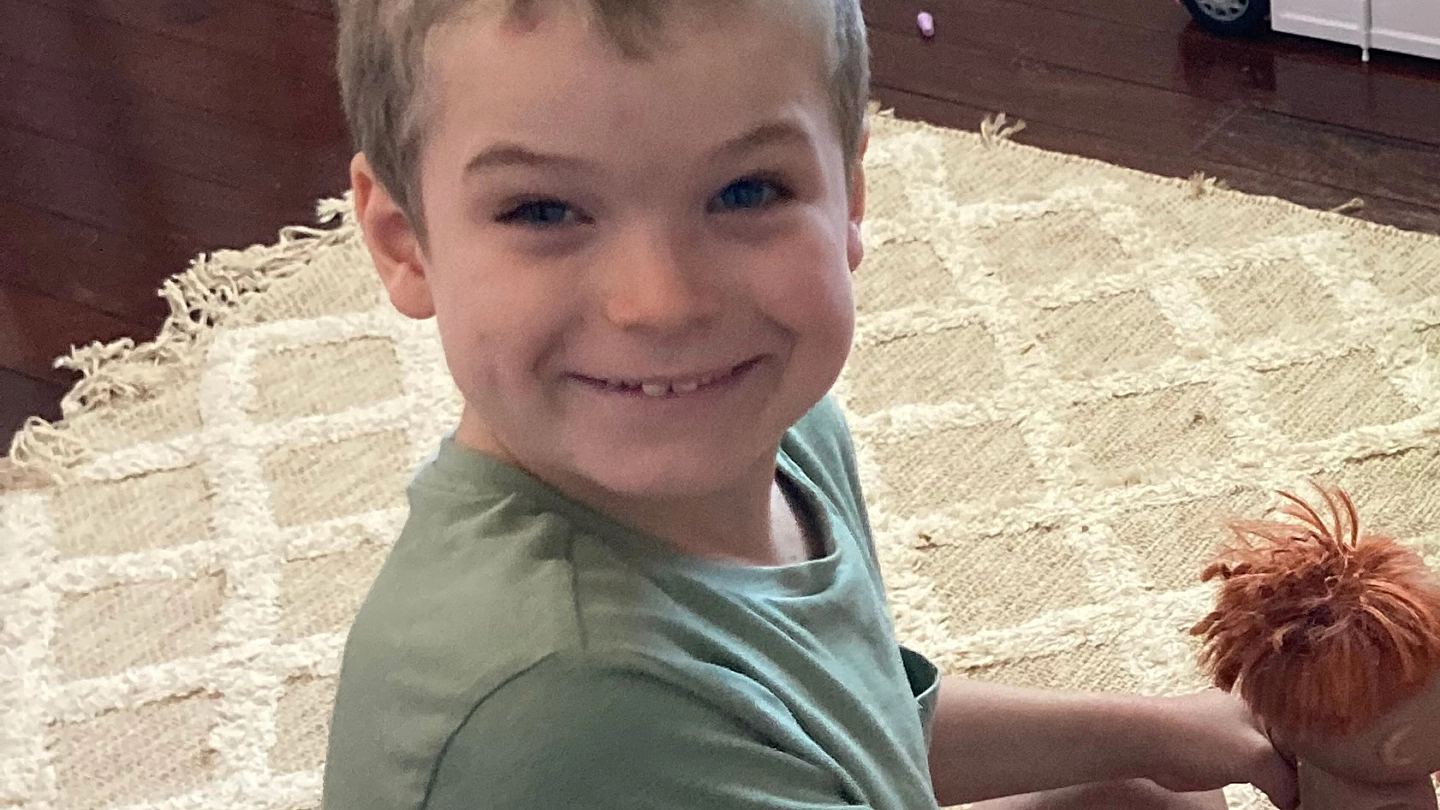Dementia doesn’t just affect older people. Sanfilippo syndrome is a type of dementia that affects children. It’s a rare genetic condition that causes fatal brain damage. It’s heartbreaking for a family.
Most children don’t live beyond their teens. And that’s why our researchers are determined to find effective treatments.
Jillian is a mum of three young children. When eldest, Rory, was three, Jillian started to worry about his speech. While he had a lot of words, he just couldn’t hold a conversation. By kindergarten, it was clear that Rory wasn’t keeping up with his peers.
“While they were drawing pictures of lions and dragons, Rory was struggling to hold his pencil correctly and draw a stick person,” Jillian said.
After many attempts to find out what was wrong, this concerned mum finally got the news she’d been dreading.
“At that first appointment, we were given an insight of what was coming our way. Rory would lose his words, and his cheeky personality would dissolve into anger and frustration. He would become so hyperactive he would be almost impossible to handle; he would have trouble sleeping.
“We were destined to slowly watch our beautiful boy lose the ability to walk independently and swallow his food. He would succumb to this insidious condition before even getting the chance to really live."
That’s why SAHMRI researchers are working hard to offer hope to families like Jillian’s, developing innovations like the ‘Brain in a Dish’ project.

The ‘Brain in a Dish’ project is a collaborative research effort involving Associate Professor Cedric Bardy from SAHMRI, Flinders University’s Professor Kim Hemsley, neurological paediatrician Dr Nicholas Smith from Women’s and Children’s Hospital and the University of Adelaide’s Professor Mark Hutchinson.
The team has taken skin cells from children with this disease and healthy kids, reverse engineered them into stem cells and then developed them into a representation of the child’s brain.
Cedric Bardy leads the Laboratory for Human Neurophysiology and Genetics at SAHMRI.
“We can grow many of these ‘brain avatars’ in petri dishes to fast-track testing a range of drugs that have already been given safety approval for human use.”
This research couldn’t mean more to parents like Jillian. After Rory’s diagnosis, Jillian had already dealt with so much. Understandably, she was worried that her younger daughter Anna might be affected, too.
“At almost four, we had her tested for peace of mind. Her test result confirmed our worst fears,” remembered Jillian. “It’s difficult to describe how devastating it is to receive this diagnosis.”
SAHMRI’s researchers work closely with families whose lives are turned upside down by a Sanfilippo diagnosis – and are making extraordinary progress in the quest to turn their discoveries into cures, treatments, better health and longer lives for little ones like Rory and Anna.
Funding from grants and other charities has made the research possible so far. But the current funding will run out in the next few months – just when we’re starting to see outstanding results.
There’s so much potential, but the team urgently needs $50,000 to keep the work going.
“Treatment will mean that no parent has to walk into that hospital room, full of doctors and nurses and trauma psychologists looking at you with sorrow in their eyes, and be told that their child has Sanfilippo and there is no cure, no treatment, and nothing you can do to stop this monster from stealing your child’s mind and body.”

Please help SAHMRI's researchers bring home a solution to this rare genetic disease by making your donation today.
You’ll give Rory and Anna and the hundreds of other children affected by this heartbreaking childhood dementia the chance to really live.




